*/
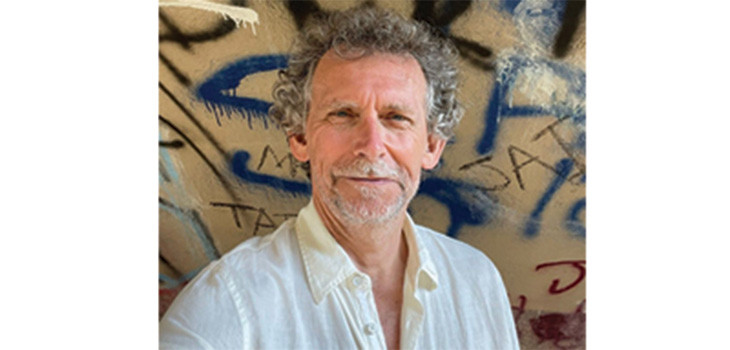
I like to think that I know how to tell stories. After all, as a trial lawyer, I spend my daylight hours, and a fair share of my night-time hours, telling stories. Most of these are set, literally, in international commercial and investment arbitrations. Stories that take the form of Requests for Arbitration, Memorials, and Rejoinders. Or they involve story-telling in the old-school way, orally, to a tribunal or a court.
Of course, the stories that I tell in these settings are bounded by what the documents, the witness statements and the expert reports recite, and also by what the applicable procedural rules permit. But, despite those boundaries, narration and language figures mightily in what we litigators do. Judges and arbitrators decide, of course, based on the law and the evidence. But they don’t ignore the stories that present those rules and facts – and many would say that those stories are one of the most important parts of any lawyer’s case.
It’s not that surprising, therefore, that so many lawyers end up being story-tellers of a different type. Think, for example, of Cicero, Geoffrey Chaucer, Franz Kafka, Honore de Balzac, James Boswell, Henry Fielding, Francois Rabelais, Johan von Goethe, Jules Vernes, Washington Irving, Wallace Stevens, Gabriel Garcia Marquez, E.T.A. Hoffman, Louis Auchincloss, Marjorie Liu, and John Grisham. All lawyers. And mostly litigators. I have nothing against bond indentures, but they may lend themselves less seamlessly to novels than closing arguments.
My own experience is that writing fiction is a world apart from legal writing. Writing for a court, an arbitral tribunal or a client is, as I said, bounded on so many sides – by procedural rules, by the law, by the evidence, by rules of professional conduct and by the court.
Fiction is mostly the opposite. When you sit down to write a spy thriller, almost everything is up for grabs. Almost every possibility is open. Who are the characters? Where does it take place? What happens and how? You start with a blank piece of paper and the entire world, and all the worlds you can conceive, can end up on that page. You narrow your options a bit as you write. The characters have to be ‘true’, both to their own characters and to external plausibility. As does the plot. But those are only the thinnest of constraints.
Where does the material to fill that unbounded, blank page come from? Every author has their own inspirations, and every page, like every author, is also different. For me, though, the inspirations come from people, places, past works by other authors, songs and films – all the stuff of life that gets reworked before filling up the blank page.
Like many lawyers, I love films about lawyers – A Few Good Men, Paper Chase, 12 Angry Men, A Man for All Seasons and others are classics. But, to be honest, I prefer films, books and songs that aren’t about lawyers – and that are instead about life outside the courtroom. Those lives – whether in Hemingway’s wartime novels, or George R.R. Martin’s fantasies, or Rudyard Kipling’s mix of both, or John le Carre’s spy thrillers – tell stories about characters who are more universal and more human. And, at least for me, stories and characters that provide more inspiration for other stories.
Places and people do the same, providing inspiration for that blank page. I love the outdoors – whether the Rwenzori Mountains on the border of Uganda and Congo or the Italian Alps, north of Lake Como. The grandeur and emptiness of those mountains provided inspiration for both early and later scenes in my first novel, The File, framing and then focusing attention on the characters.
City scenes do the same. One of my favourite cities is, perhaps a little suprisingly, Zurich. It fully deserves its reputation as the world’s most livable city – combining the beauty of the Alps (again…) and Lake Zurich with exceptional creature comforts of food, drink, music, art and interesting people. But it’s not always that high on places to visit. That’s a bit of a shame. I think Zurich conceals its true self beneath the comforts and pleasant order, a little like its Winter Snowman Bonfire (the Sechselaeuten). But more on that, again, in The File, which concludes on the shores of the Lake, not far from the boutiques and pastry houses on Bahnhofstrasse.
In the end, though, all these inspirations end up in front of that blank page any author confronts. And the joy, and the other emotions, of writing comes from trying to capture those inspirations and capture them on an empty piece of paper for others to share.
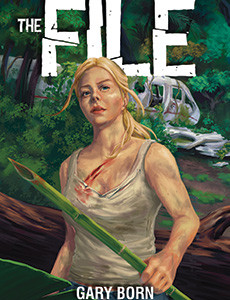

The Rwenzori Mountains, Uganda
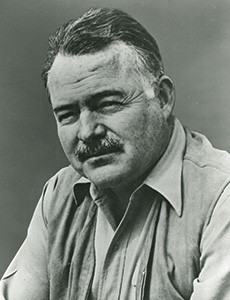
Ernest Hemingway
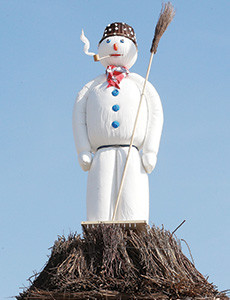
The Winter Snowman Bonfire in Zurich

I like to think that I know how to tell stories. After all, as a trial lawyer, I spend my daylight hours, and a fair share of my night-time hours, telling stories. Most of these are set, literally, in international commercial and investment arbitrations. Stories that take the form of Requests for Arbitration, Memorials, and Rejoinders. Or they involve story-telling in the old-school way, orally, to a tribunal or a court.
Of course, the stories that I tell in these settings are bounded by what the documents, the witness statements and the expert reports recite, and also by what the applicable procedural rules permit. But, despite those boundaries, narration and language figures mightily in what we litigators do. Judges and arbitrators decide, of course, based on the law and the evidence. But they don’t ignore the stories that present those rules and facts – and many would say that those stories are one of the most important parts of any lawyer’s case.
It’s not that surprising, therefore, that so many lawyers end up being story-tellers of a different type. Think, for example, of Cicero, Geoffrey Chaucer, Franz Kafka, Honore de Balzac, James Boswell, Henry Fielding, Francois Rabelais, Johan von Goethe, Jules Vernes, Washington Irving, Wallace Stevens, Gabriel Garcia Marquez, E.T.A. Hoffman, Louis Auchincloss, Marjorie Liu, and John Grisham. All lawyers. And mostly litigators. I have nothing against bond indentures, but they may lend themselves less seamlessly to novels than closing arguments.
My own experience is that writing fiction is a world apart from legal writing. Writing for a court, an arbitral tribunal or a client is, as I said, bounded on so many sides – by procedural rules, by the law, by the evidence, by rules of professional conduct and by the court.
Fiction is mostly the opposite. When you sit down to write a spy thriller, almost everything is up for grabs. Almost every possibility is open. Who are the characters? Where does it take place? What happens and how? You start with a blank piece of paper and the entire world, and all the worlds you can conceive, can end up on that page. You narrow your options a bit as you write. The characters have to be ‘true’, both to their own characters and to external plausibility. As does the plot. But those are only the thinnest of constraints.
Where does the material to fill that unbounded, blank page come from? Every author has their own inspirations, and every page, like every author, is also different. For me, though, the inspirations come from people, places, past works by other authors, songs and films – all the stuff of life that gets reworked before filling up the blank page.
Like many lawyers, I love films about lawyers – A Few Good Men, Paper Chase, 12 Angry Men, A Man for All Seasons and others are classics. But, to be honest, I prefer films, books and songs that aren’t about lawyers – and that are instead about life outside the courtroom. Those lives – whether in Hemingway’s wartime novels, or George R.R. Martin’s fantasies, or Rudyard Kipling’s mix of both, or John le Carre’s spy thrillers – tell stories about characters who are more universal and more human. And, at least for me, stories and characters that provide more inspiration for other stories.
Places and people do the same, providing inspiration for that blank page. I love the outdoors – whether the Rwenzori Mountains on the border of Uganda and Congo or the Italian Alps, north of Lake Como. The grandeur and emptiness of those mountains provided inspiration for both early and later scenes in my first novel, The File, framing and then focusing attention on the characters.
City scenes do the same. One of my favourite cities is, perhaps a little suprisingly, Zurich. It fully deserves its reputation as the world’s most livable city – combining the beauty of the Alps (again…) and Lake Zurich with exceptional creature comforts of food, drink, music, art and interesting people. But it’s not always that high on places to visit. That’s a bit of a shame. I think Zurich conceals its true self beneath the comforts and pleasant order, a little like its Winter Snowman Bonfire (the Sechselaeuten). But more on that, again, in The File, which concludes on the shores of the Lake, not far from the boutiques and pastry houses on Bahnhofstrasse.
In the end, though, all these inspirations end up in front of that blank page any author confronts. And the joy, and the other emotions, of writing comes from trying to capture those inspirations and capture them on an empty piece of paper for others to share.


The Rwenzori Mountains, Uganda

Ernest Hemingway

The Winter Snowman Bonfire in Zurich
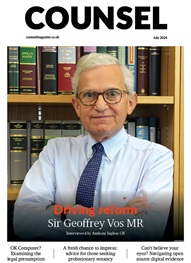

The Chair of the Bar sets out how the new government can restore the justice system
In the first of a new series, Louise Crush of Westgate Wealth considers the fundamental need for financial protection
Unlocking your aged debt to fund your tax in one easy step. By Philip N Bristow
Possibly, but many barristers are glad he did…
Mental health charity Mind BWW has received a £500 donation from drug, alcohol and DNA testing laboratory, AlphaBiolabs as part of its Giving Back campaign
The Institute of Neurotechnology & Law is thrilled to announce its inaugural essay competition
How to navigate open source evidence in an era of deepfakes. By Professor Yvonne McDermott Rees and Professor Alexa Koenig
Brie Stevens-Hoare KC and Lyndsey de Mestre KC take a look at the difficulties women encounter during the menopause, and offer some practical tips for individuals and chambers to make things easier
Sir Geoffrey Vos, Master of the Rolls and Head of Civil Justice since January 2021, is well known for his passion for access to justice and all things digital. Perhaps less widely known is the driven personality and wanderlust that lies behind this, as Anthony Inglese CB discovers
The Chair of the Bar sets out how the new government can restore the justice system
No-one should have to live in sub-standard accommodation, says Antony Hodari Solicitors. We are tackling the problem of bad housing with a two-pronged approach and act on behalf of tenants in both the civil and criminal courts